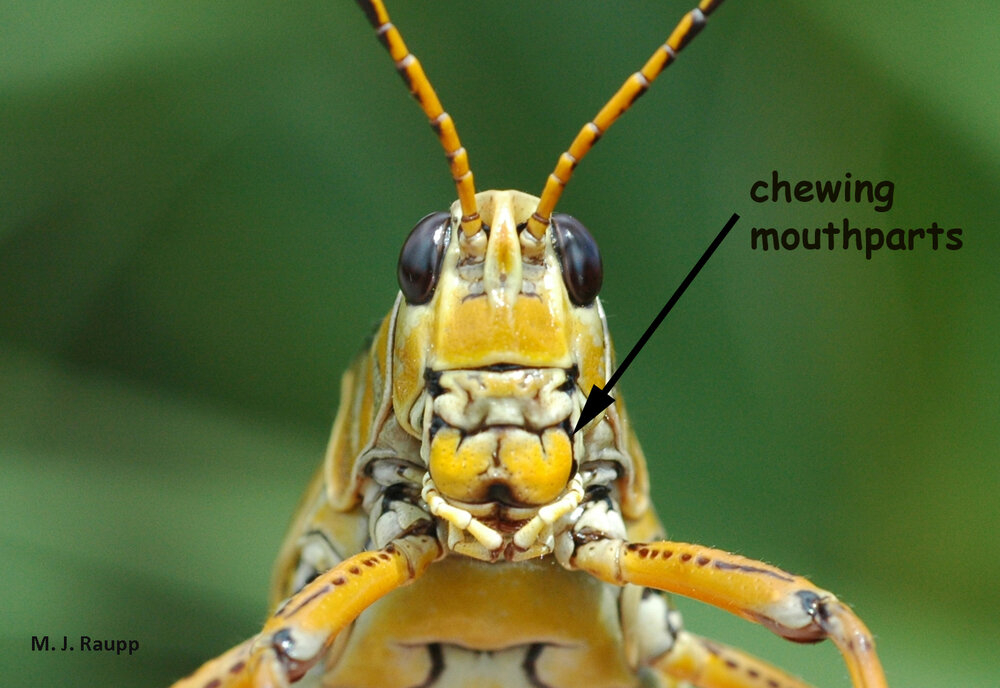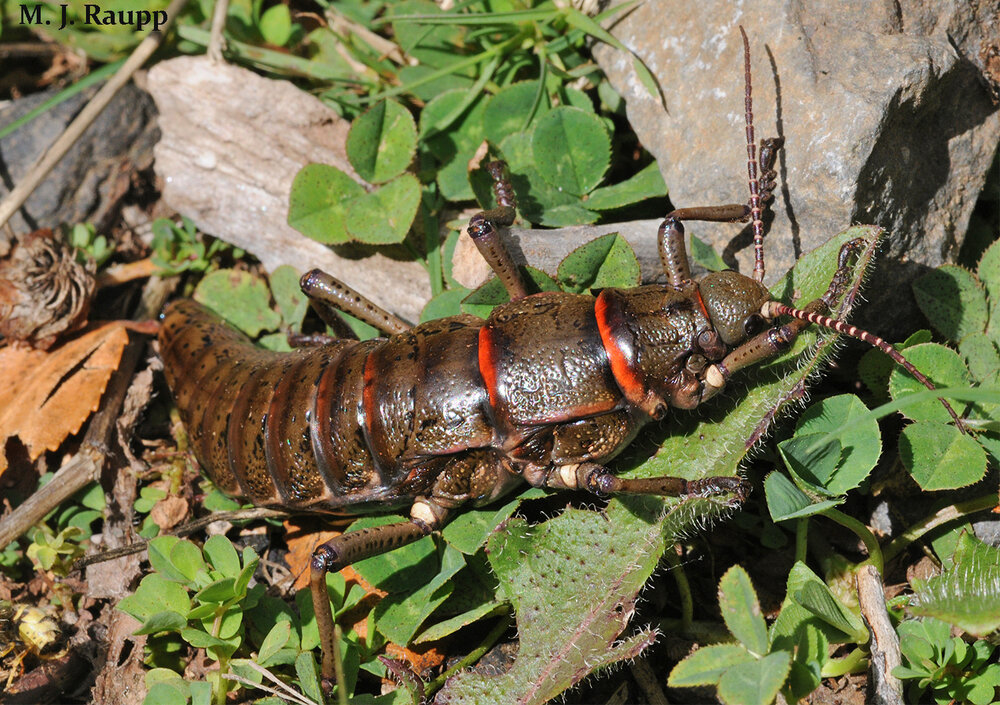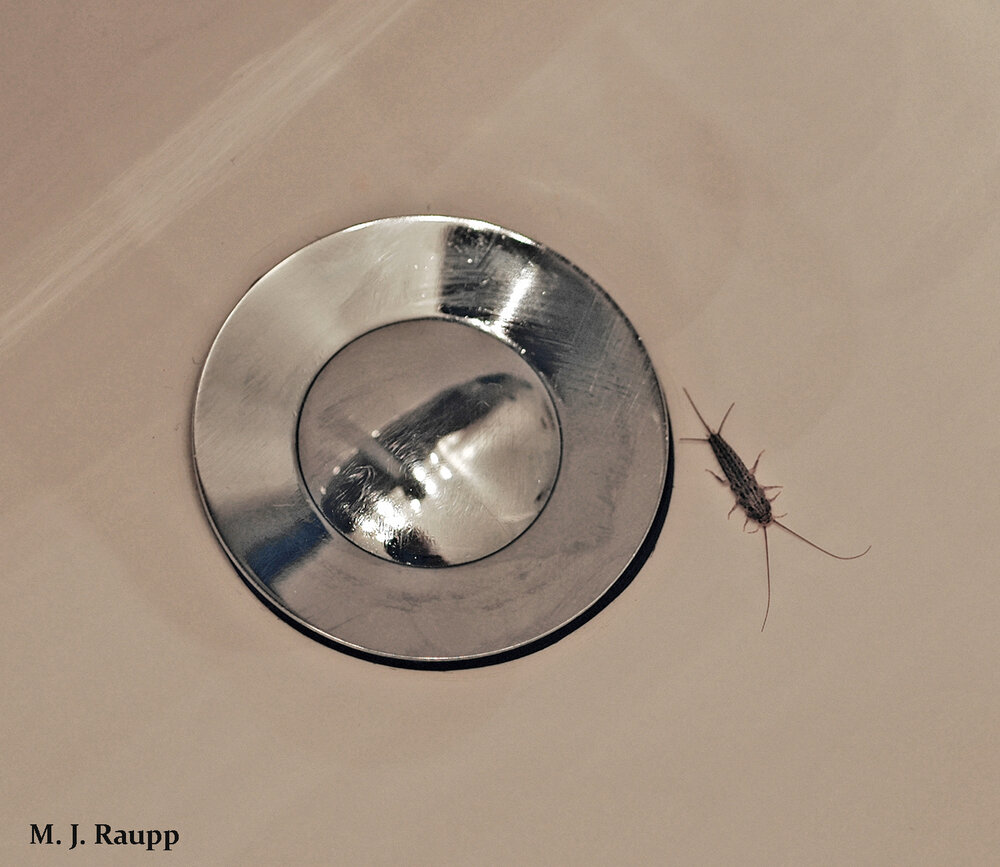Are cicadas locusts? Locusta spp. and Magicicada spp.

All cicadas, including this adult periodical cicada of Brood X, have sucking mouthparts to sip liquids from vascular systems of plants.
Last week we visited Brood X periodical cicada nymphs preparing to exit the earth after a 17-year interment underground. This week let’s settle the score on an often-asked question about cicadas, “Are they locusts?” The notion that periodical cicadas are a type of locust dates back to some of the earliest biologists and religious leaders struggling to understand the strange and unprecedented appearance of legions of large insects emerging from the earth every 17 years. In 1666 Henry Oldenberg, a German theologian and natural historian was, perhaps, the first to note the peculiar similarity between periodical cicadas in North America and biblical plagues of locusts which occurred periodically in parts of Eurasia. Oldenberg referred to the cicadas as “flyes” rather than locusts. Some 49 years later in 1715, the Reverend Andreas Sandel of Philadelphia described cicadas as “locusts”, noting that this was the vernacular name given to these creatures in the English colonies. But his reference to locusts was not to the eighth biblical plague of Egypt; rather, his allusion was to the fact that Native Americans consumed cicadas in much the same way that John the Baptist had eaten locusts. And so, Sandel concluded his account by stating “These locusts lasted not longer than up to June 10, and disappeared into the woods.”

Locusts like this Floridian lubber locust are grasshoppers and have chewing mouthparts used to consume leaves and blossoms of plants.
We met lubber locusts in a previous episode of Bug of the Week. Locusts belong to an order of insects called Orthoptera and are members of the family Acrididae. Acridids are commonly called grasshoppers and these cosmopolitan insects number more than 10,000 species worldwide. Some, like the differential grasshopper, are common residents in landscapes where they munch flowers and vegetables. Others, like the migratory locust, Locusta migratoria, likely the real culprit of the eighth plague of Egypt, are widely distributed across several continents. They can attain astounding densities, become highly mobile, and use powerful jaws to devour vast swaths of vegetation as they rage across the earth.
Watch as a grasshopper uses its jaws to chew leaves of a small plant. Locusts are a type of grasshopper. By contrast, cicadas like this Brood X periodical cicada sip fluids with sucking mouthparts inserted into the vascular tissue of plants. Notice the sucking mouthparts point downward between the front legs of the cicada. Excess fluid from their liquid meals is excreted by cicadas. Tropical cicadas produce torrents of liquid waste as they feed. Fortunately for millions of folks who will be visited by periodical cicadas this year, Brood X does not generate cicada showers of this magnitude.

Cicada nymphs live underground and also have sucking mouthparts.
Periodical cicadas belong to an order of insects called the Hemiptera (true bugs). They are members of the family known as the Cicadidae. More than 3,000 species of cicadas inhabit the earth and they are found on all continents except Antarctica. However, the magical periodical cicadas occur only in the eastern half of the United States – lucky us. Periodical cicadas lack the biting jaws of locusts; instead, their mouthparts consist of a soda straw-like affair. Both nymphs and adults insert this proboscis into vascular tissue called xylem which is found in roots and stems of plants. Cicadas suck nutrients and water into their digestive tract with these mouthparts. Excess fluid is excreted from the digestive tracts of cicadas and there have been reports of folks standing beneath a tree loaded with cicadas who felt a gentle shower emanating from the tree above. When billions of cicadas are about, like John Fogerty crooned, you could see rain “commin’ down on a sunny day, yeah.”
So, to answer the question, “are cicadas locusts?” Nope.
Acknowledgements
Bug of the Week thanks Gene Kritsky for providing the inspiration for this episode and acknowledges his wonderful book “Periodical Cicadas: The Plague and the Puzzle”, which was used as a reference for this episode. We also thank Dr. Shrewsbury for helping wrangle cicada nymphs featured in this and last week’s episode.
This post appeared first on Bug of the Week


























